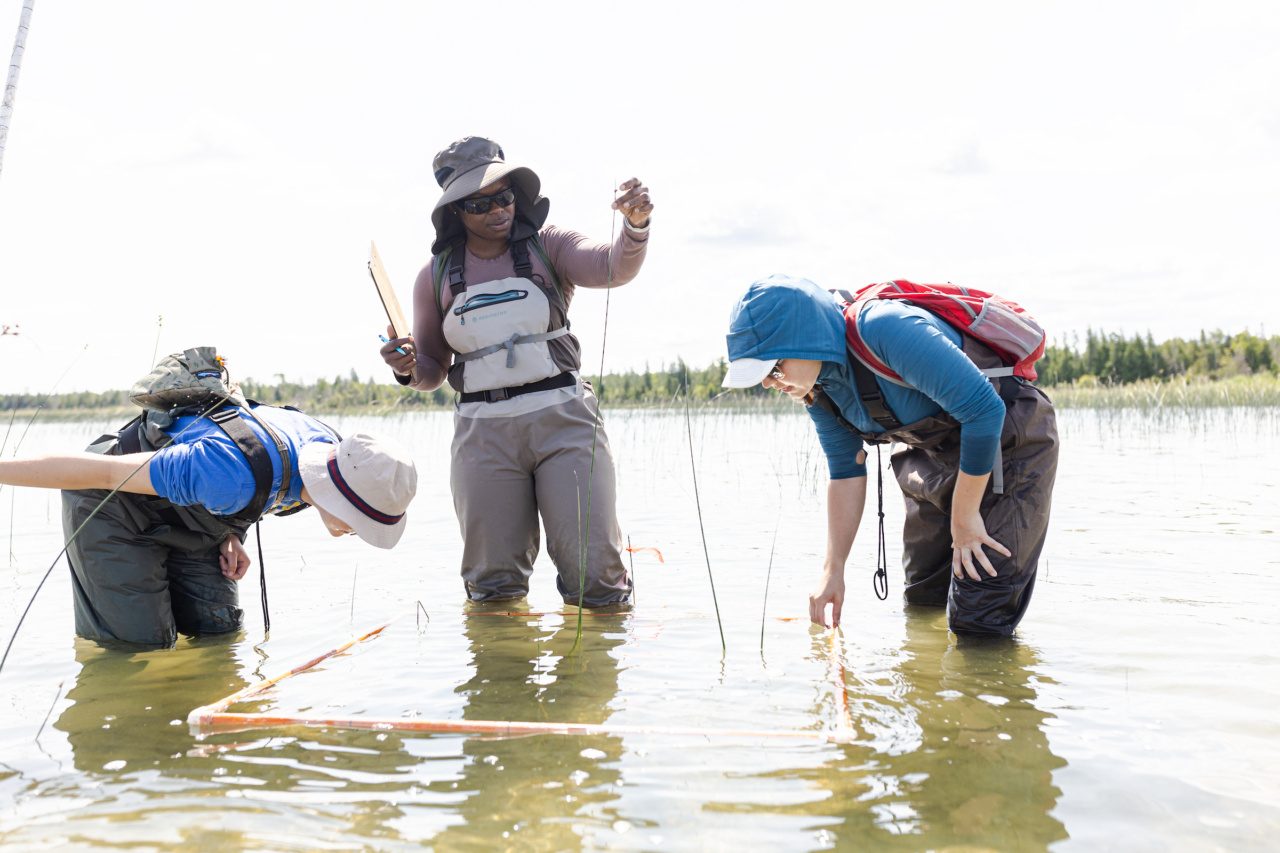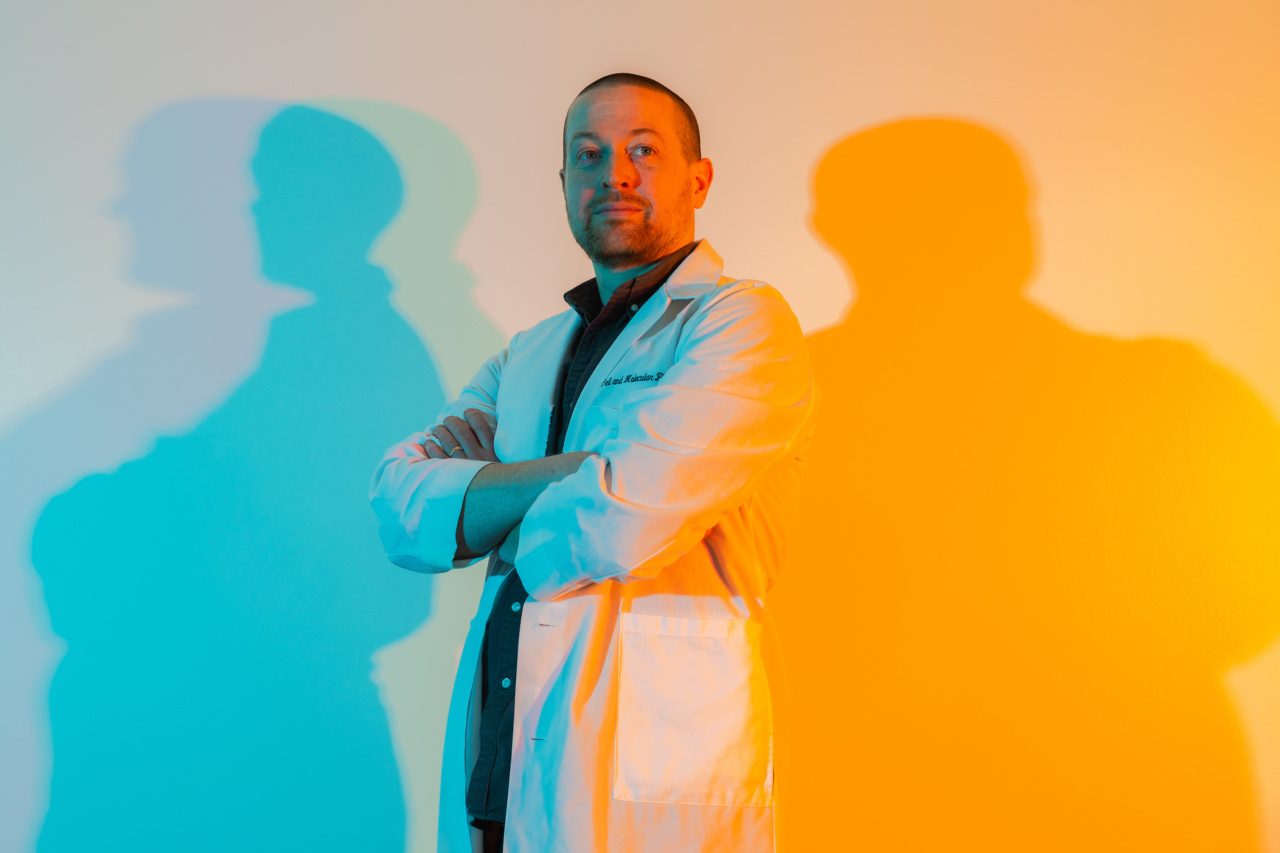
Are hemp plants a miracle cure for lead contamination?
Aaron Leese is a computer programmer and an amateur musician who moved from California to Pilsen, on Chicago’s near South Side, five years ago. After he sanded an old garage behind what was then his new (and overgrown) backyard, he worried that he’d scattered paint all over the place. The structure wasn’t necessarily new, which meant the paint probably wasn’t, either. So he and his wife, Rebecca, had the ground tested for lead.
“It was indeed worse by the garage,” he says, “but it was pretty bad everywhere. There was more than that source. City living, man.”
They’d recently had their first child (a second would follow) and that the yard where their kids play could be contaminated made them deeply anxious. The stakes escalated when the Leeses started renting out their basement to a small, family- run day care provider.
More children, more potential exposure, more risk.
Through a mutual acquaintance, they connected with Kevin Erickson, senior manager of sustainable agriculture at Loyola University Chicago’s School of Environmental Sustainability. To their delight, Erickson wanted to pull up their Pb (or lead) contaminated soil. Unlike almost anyone else in Illinois, he actually needed it.
Lead contamination in cities is a legacy problem; Americans used leaded paint, pipes, and gasoline for far too long, and lead—a metal element—does not decompose. Instead, it spewed out of tailpipes or smelting factories, chipped off buildings, and embedded itself in the terra firma. Lead ingestion is unhealthy for anyone but can be especially dangerous among children: slowing development, inhibiting their ability to focus, accelerating learning disabilities, and damaging the nervous system. The effects are irreversible and can be cumulative.
Anita Weinberg, the Curt and Linda Rodin Clinical Professor of Law and Social Justice at Loyola’s School of Law, has worked on lead issues for two decades. “Once they start crawling around, rubbing their hands on the ground, or putting toys in their mouths,” she says, “that’s when children are most at risk.”
Andrew Margenot, an assistant professor of crop sciences at the University of Illinois Urbana-Champaign, has comprehensively surveyed soil health across the entirety of Chicago, on public parkways and in private backyards. The city is, on average, 11 times enriched above natural baseline levels. Poor communities are disproportionately impacted, largely because those neighborhoods have fewer resources to clean the sources of exposure.
Across disciplines at Loyola, the causes and implications of lead poisoning have been admirably prioritized. Weinberg has done policy work at the Illinois statehouse and organized education and advocacy campaigns back home. What surprised her most when she first started, she remembers, “was the fact that lead poisoning was such an expansive problem and I knew so little about it.”
“There’s no gas phase for lead,” he says. “Lead can be there for millennia.”
In 2013, Erickson created the Urban Agriculture Program within Loyola’s School of Environmental Sustainability. He’s long held an interest in soil lead risk, understanding it as “uniquely an urban issue.” A few years back, Erickson read about the potent powers of hemp, a historically versatile yet misunderstood crop.
By definition, industrial hemp is high in fiber and low in active tetrahydrocannabinol (THC), the psychoactive ingredient in marijuana. For nearly a century, commercial cultivation of hemp was forbidden in the United States. Essentially, the roots of the hemp plant can dig deep into contaminated soil and absorb harmful chemicals that might remain, in a process of immobilization called phytoremediation.
Less understood is how phytoremediation impacts the hemp plant itself. In other words, if you plant hemp to clean up dirty soil, what are the risks of that uptake? Could hemp cleanse soil while also producing viable and healthy flowers, leaves, stalks, and stems, all of which can be repurposed and sold commercially?
If so, the market for city landowners could be huge.

“That’s huge that you can sharply reduce the amount of lead going into this plant. Hemp has not really been well studied in this endeavor.”
— Kevin Erickson, Senior manager of sustainable agriculture at Loyola’s School of Environmental Sustainability
Before he could start investigating, Erickson had to secure contaminated soil. An agreement was brokered: Erickson would haul away samples from various corners of the Leeses’ yard in exchange for bags of compost and some consultations on best practices for rehabbing the remainder of their space. “Kevin called and said he was taking dirt,” Leese remembers. “I told him, that’s the best possible thing—come take as much soil as you want!”
In the end, Erickson hauled away a metric ton of the stuff, enough to fill 32 pots at 10 gallons a piece. After renting the largest U-Haul truck he could find, Erickson and Leese threw on hazmat suits and started shoveling; the lead levels were worryingly high in pockets of the property.
“It was toxic waste,” says Leese. “It hurts your brain a little bit to think about it.”
In early 2022, Erickson harvested the plants and sent away samples to Deibel Labs, a prominent cannabis testing facility, to discern just how effective his hemp proved to be.
The results were significant.
He found that there was a way to mitigate the risks of lead uptake into the plants, by adding a high level of phosphorous to the fertilizer. It reduced the lead in the hemp plant by more than 100% in all treatments.
“That’s huge,” he says, “that you can sharply reduce the amount of lead going into this plant. Hemp has not really been well studied in this endeavor.”
In April, he used the data and used it to defend his master’s thesis in environmental science and sustainability at Loyola.
That Loyola approved and supported a project like his was by no means guaranteed; soil analysis is expensive work, and there are still outdated stigmas attached to hemp in particular.
There are very few published studies available on industrial hemp flowers grown in highly enriched Pb soils, and Loyola University is one of the first Catholic institutions nationally to support this research work. “I think it’s really exciting for Loyola to agree to this,” he says. “It hits on social justice, sustainability, and the environment. It shows a lot about who we are.”
Later that day, Erickson trucked the stuff 15 miles to Loyola’s Lake Shore Campus, and nearly broke his back hauling the 70-pound pots up a tight stairwell into the Ecodome greenhouse inside the SES building. Over the next few months, he grew hemp.
Chloe Lilliston, an environmental studies student and a former urban agriculture intern, helped Erickson tend to the plants. Though her academic work is policy focused, Lilliston grew up on a farm in Minnesota and has “a pretty decent understanding of soil health.” She jumped into the lab work with gusto. All fall and into the winter, Lilliston monitored the temperature and moisture of the soil, ensuring “things were super steady and super even.” She watered and pruned and rotated and watched as the plants flourished, eventually sprouting hip-high. Though maybe it shouldn’t have, it surprised both of them just how fragrant the hemp turned out to be.
Erickson was also able to jumpstart a comprehensive makeover of the Leeses’ yard. There’s a small patio made of salvaged brick. Up the side and stretching to the alley are rambling gardens and raised beds outfitted with landscaping fabric. Leese has planted lilies, carrots, radishes, eggplant, garlic, and more. Abutting his neighbor’s place is a large mulberry tree whose branches hang over a fire pit and an outdoor sauna. In the summer, Leese collects the berries and from them ferments batches of wine he lovingly describes as mediocre.
Near the sidewalk sits a sandbox for the daycare; in their enthusiasm, kids have a tendency to trample over grass, prompting Leese to invest in sturdier seeds. Wherever he looks, the sod and mulch and wood chips are demonstrably healthier than the gray, leaden turf he first encountered. Some of his neighbors think he’s obsessive for worrying so much. Others appreciate his diligence—they garden on their properties, too.
“We don’t worry about it now that we have a decent plan of action,” Leese says. “Enough research has led to enough clarity.”
Read more stories from the School of Environmental Sustainability.



